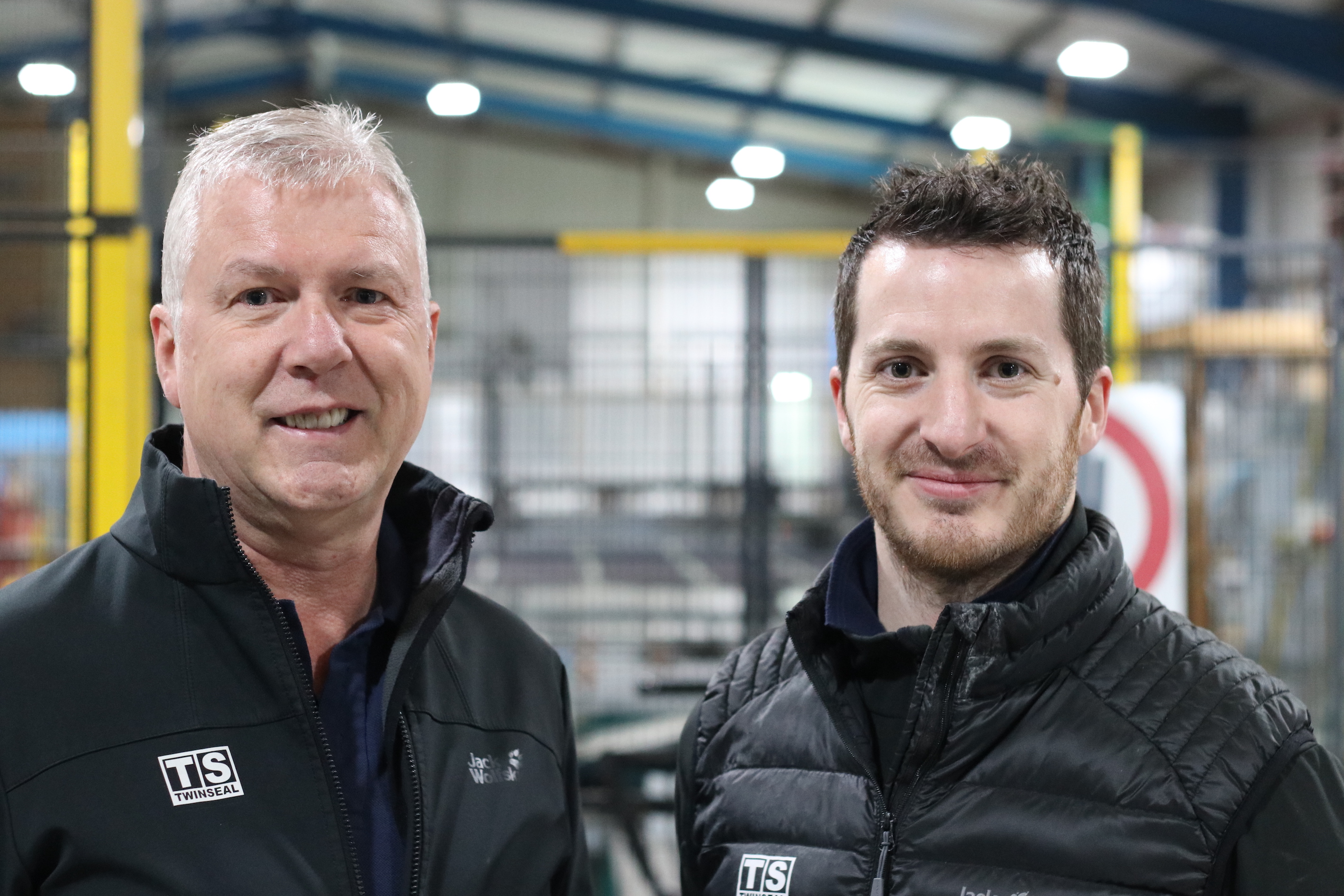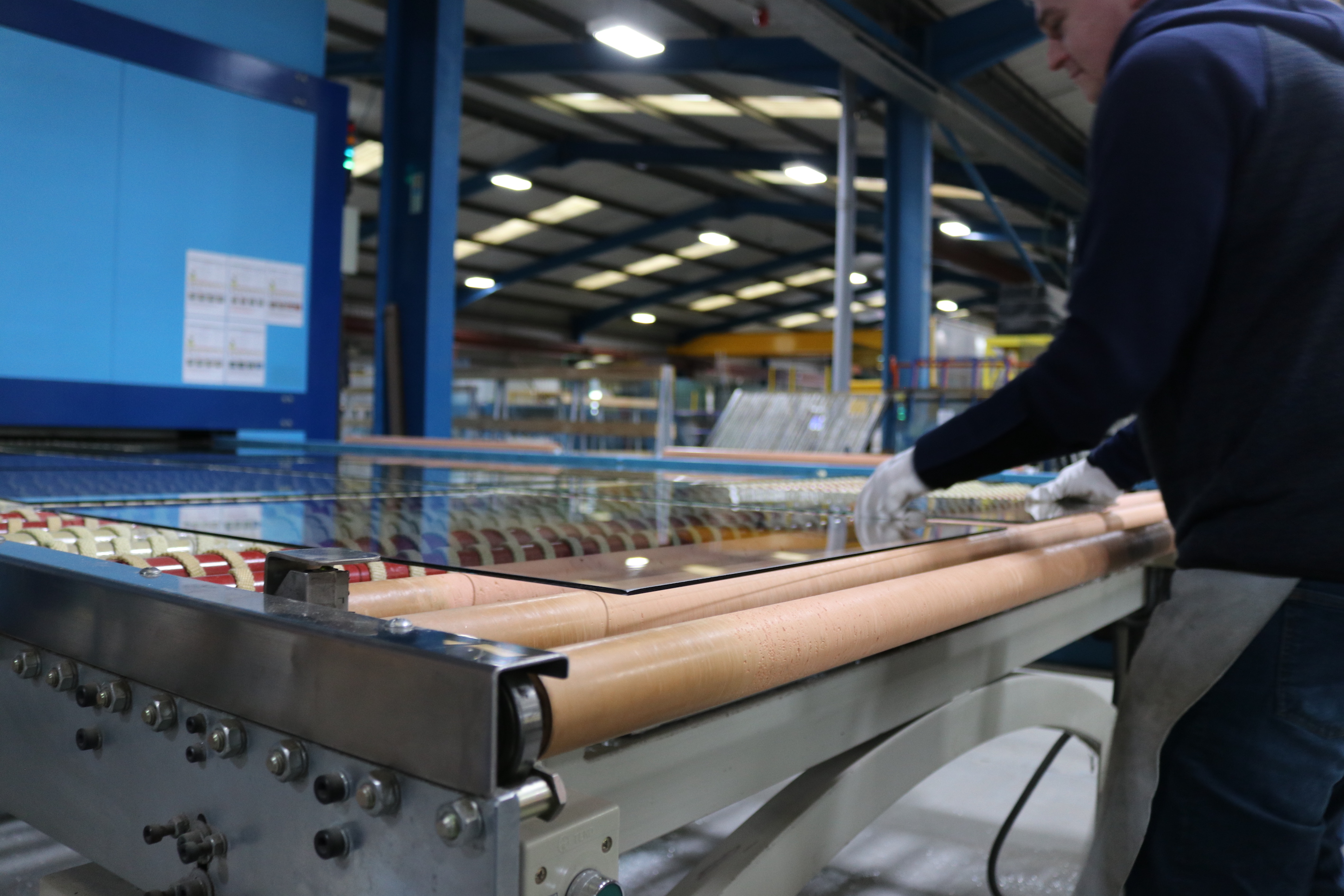Tailored solution for Twinseal
Leading edge processing and planning software has the potential to offer glass processors and IGU manufacturers massive efficiency gains, but can it also be flexible? Glass Times reports.
“We have two IGU lines and two toughening furnaces. Downtime isn’t ever a problem, we always have reserve capacity. Customers don’t want to know about downtime on the lines. They want reliability in product quality and in service. That’s what we have built our model on.” says Billy Cowen, Managing Director, of Twinseal.
Twinseal, which operates from just outside York, was set up in 1975 as AT Cowen, by Billy’s father Allan. Now run by Billy with his own son Lee, Twinseal is about as slickly run an IGU manufacturer and glass processor as there is.
This is immediately evident in the ‘little things’. The 32,000 square ft factory floor is immaculately swept, shelves and racking neatly organised, Billy pointing out the economies associated with buying glass in complete packs. You immediately get the impression that every cost, every process is accounted for.
Twinseal has exceptionally low rates of employee turnover. It’s not uncommon for its manufacturing team to have been with the company for twenty or thirty years plus. It also invests heavily in training, health and safety, processes and production fire training, first aid and skills.
Pointing out new double height shelving, recently purchased to make spacer bar more accessible, Billy said, “I’m constantly looking at ways to make things better. You walk around and you spot something that isn’t quite right and then we go and change it.”
Lean manufacturing may have been invented by the Japanese and Toyota but Twinseal has applied it with a passion and precision that is rarely replicated, even in the most advanced manufacturing environments.
“We’ve done a lot of work to develop systems to drive efficiencies through the automation of workflow and software. We aren’t running big margins. The market’s too competitive, so we have to focus on efficiency,” Billy explains.
“We’ve been tracking and monitoring everything for years. Measuring what we do and working it to become more efficient but we were reliant on bespoke systems. This was a vulnerability in our model.”
After calling in a number of software providers, Twinseal chose Clear Thinking Software and it’s Glass Office and GlasSave packages.
We had a bespoke system and we didn’t want to lose that flexibility. Technically I suppose Glass Office and GlasSave are off-the-shelf solutions, but they can be set up to do exactly what you want them to do.”
“Glass Office delivers data in totality with the ability to filter what you want from it.”
Developed specifically for the glass processing and IGU sector, Glass Office was launched by Clear Thinking Software in 2001, designed to support management of the complete order process from quote through to scheduling, production, invoicing and warranty.
Its current incarnation is the product of more than 30 years continuous development and refinement offering a series of unique features including the ability to manage pricing, discounts and orders; schedule a mix of IGU manufacture with process work; track failed units to specific production cycles to understand the cause of those failures; print labels, delivery notes and schedule deliveries.
 It does this using bar code and scanning technology to provide real-time visibility of exactly where product is in the production cycle, and in relation to staging gates critical to on-time customer delivery.
It does this using bar code and scanning technology to provide real-time visibility of exactly where product is in the production cycle, and in relation to staging gates critical to on-time customer delivery.
“We would ask Clear Thinking could it [Glass Office and GlasSave] do something? And they would say ‘yes’ and go away and do it. They did exactly what they said they would do and that allowed us to develop a solution that was adapted and reflected in the processes we had in place.
“For example, we wanted to run colour codes on labels, it’s how we’ve set up the factory. There’s a different colour for a different day and then red if it’s a priority job.
“It’s one very simple example of how there was room in the software to adapt it and build it around how we worked – and just as importantly a willingness from the team from Clear Thinking Software to work with us.
“At the other end of the scale you can access so much data. You can report and understand not only your gross profit but the detail that sits behind it. Which delivery routes are actually working for you, or if they’re not, right down to the profitability of individual customers.
“You can access every conceivable analytic. In the truest sense, knowledge is power.”
He added that the flexibility to print its customer’s own logos and labels on units had also had a positive impact. “It’s allowed us to add a little bit of value. It reinforces our customers’ brands and they’ve really liked it,” Billy says.
If Glass Office supported Twinseal in bringing increased resilience to its operations, combined with GlasSave, Clear Thinking Software’s glass optimiser, it has also delivered a series of efficiencies. This has included allowing Twinseal to ‘mix-in’ processing work alongside IGU manufacture in single batches.
“We took the decision to bring our glass processing business into this site in September”, says Billy. “We saw an opportunity for some marginal gains.
“You’re seeing a lot of bigger units. It doesn’t matter how carefully you optimize your cutting table if you’re cutting glass for a 700mmX2000mm unit, you’re still going to generate offcuts. The sizes we were getting were difficult to use and we were wasting a lot of clear 6mm glass.
“Running processed glass alongside product for IGU manufacture, we’re able to re-use those off-cuts in processed work. The optimiser mixes it all up in the cutting line and then the labelling and colour coding system used in Glass Office puts everything back into order again,” he says.
GlasSave is designed to work with a wide range of glass cutting tables, helping to maximise outputs from 3210 x 2250/2550mm sheets as well as full jumbo 6000 x 3210mm sheets, creating clear cutting plans based on daily production requirements.
In addition to this, it also takes into consideration the available space for sorting and storing cut glass, nesting shapes, for example balustrades, wherever possible, also storing and re-using off-cuts, where appropriate to do so.
This delivers significant efficiency savings compared to manual cutting of between 15 to 30%, directly putting back on your bottom line by reducing overheads.
“Software isn’t cheap – but then neither is hardware or glass or time,” Billy continues. “The efficiency gains don’t have to be big percentages to become a big figure over time. It’s about identifying marginal wins and letting them add up.
“Glass Office and GlasSave allows us to work the data and filter it, and extract what we need to, to identify those gains.”
Twinseal Ltd, Unit 20, Green Park Business Centre, Sutton-on-the-forest, York YO61 1ET
Originally published in Glass Times – April 2020
